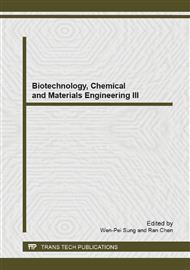p.675
p.679
p.685
p.689
p.694
p.698
p.702
p.706
p.711
Soil Infiltration Characteristics under Different Land at Western Yunnan Plateau
Abstract:
On the basis of soil physical properties of three different land use types at western Yunnan plateau, the soil moisture infiltration characteristics in these three land use types were studied with the advanced double-rings method. The results showed that there were differences on soil bulk density, soil porosity, initial soil water infiltration rate and stable soil water infiltration rate. The bulk density of dry land is higher than that of forest land and grass land, which results in the physical properties and structure of forest land soil are better than those of non-forest land. For the initial infiltration, its order from high to low is forest land, dry land and grass land. Among different stands, it is showed that from the average infiltration rate and steady infiltration rate, its order from high to low was forest land, grass land and dry land.
Info:
Periodical:
Pages:
694-697
Citation:
Online since:
January 2014
Authors:
Price:
Сopyright:
© 2014 Trans Tech Publications Ltd. All Rights Reserved
Share:
Citation:


